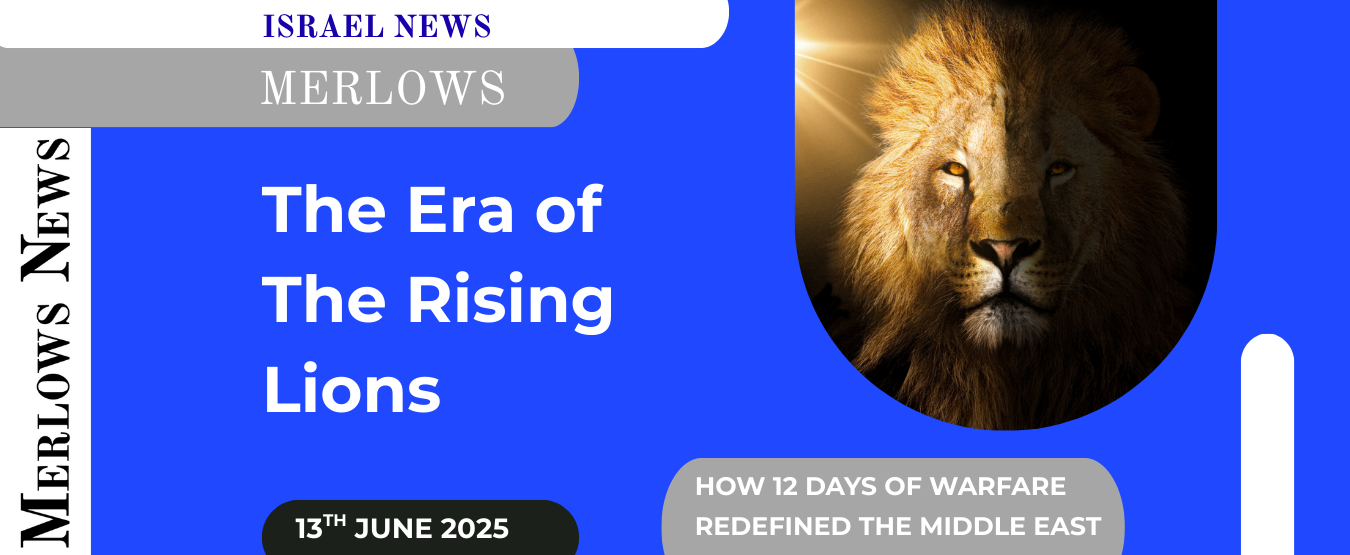Genesis of the Storm
On 13 June 2025, the long-anticipated rupture between Israel and Iran erupted into open warfare. In a sweeping surprise offensive, Israel deployed over 200 fighter jets, striking nearly 100 targets, including the Natanz nuclear facility, military bases, and regime infrastructure. The opening salvo was complemented by elite Mossad and special forces operations targeting Iranian air-defenses, and the silencing of top nuclear scientists and military commanders in what Israel referred to as Operation Red Wedding and Operation Narnia.
Iran responded in kind. Missiles and hundreds of drones—dubbed Operation True Promise 3—were launched at Israeli cities, striking Tel Aviv, Bnei Brak, Haifa, and Petah Tikva. Casualties included at least 29 civilians and one off‑duty soldier in Israel, with over 1,190 deaths and more than 4,475 injured across Iran, according to HRANA data. A direct strike on Soroka Medical Center in Beersheba injured dozens and caused a chemical leak, widely condemned as a war crime.
Intermediate states rallied. Iran’s proxies—the Houthis, Hezbollah affiliates, and allied militias—launched drone and missile strikes from Yemen and Lebanon, expanding the theatre of conflict
A War of Technology and Covert Mastery
This was not a clash of tanks and trenches, but of stealth strikes, cyber warfare, precision missiles, and data infiltration. Israeli Arrow and Iron Dome systems intercepted the majority of incoming Iranian fire, while Iran exercised a sophisticated cyber campaign—deploying malicious websites to surveil pro‑Israel traffic and control information flows abroad.
The campaign demonstrated Israel’s dominance in multi-domain warfare, but also spotlighted Iran’s vulnerability in its command-and-control structures—a weakness exploited with surgical precision.
U.S. Steps In: Operation Midnight Hammer
While the conflict began Israeli-led, U.S. involvement escalated rapidly. By 22 June, the U.S. launched Operation Midnight Hammer, striking hardened Iranian nuclear sites beyond Israel’s reach. That action prompted Iranian reprisals—including a missile attack on Al Udeid Airbase in Qatar—but ultimately underscored American resolve to prevent Iran’s nuclear ascendance.
Ceasefire Under Trump’s Mediation
After twelve days of pitched combat, an uneasy ceasefire went into effect on 24 June 2025, brokered jointly by the U.S. and Qatar. The agreement hinged on reciprocal cessation of hostilities—though Tehran insisted on Iran’s right to enrich uranium, while Israeli and U.S. leaders pledged readiness to strike again if Iran rebuilt its capabilities.
Inside Iran, the Supreme Leader minimized public engagement while establishing a new Defense Council—led by President Masoud Pezeshkian—to rebuild military integrity and project strength in the wake of the blows.
Casualty, Disruption, and Regional Fallout
According to Iranian monitoring groups, the toll included roughly 1,190 killed and 4,475 wounded; Israeli figures noted 29 civilian deaths, over 3,200 wounded, and massive displacement on both sides.
Regional travel, trade, and commerce stalled. Ben-Gurion Airport resumed operations days after the truce, but the impact on Gulf logistics, energy markets, and investor confidence was profound.
The Strategic Victors—What Should Israel Do Next?
Israeli Prime Minister Benjamin Netanyahu framed the outcome not as the end, but as an opening. He argued: “This victory presents an opportunity for a dramatic widening of peace agreements—we cannot waste even a single day”.
Alongside U.S. envoy Steve Witkoff, Netanyahu sees the conflict’s conclusion as a catalyst for robust expansion of the Abraham Accords, potentially involving Saudi Arabia, Syria, and others within one or two years.
Israel’s victory reset the geopolitical dial. Saudi Arabia, having seen Iran’s strength shattered and America’s backing reinforced, now appears more open to normalization. Syria and Lebanon—once dismissed as distant possibilities—are now being floated as potential next entrants into accords, pending governance and reform conditions.
Iran’s Response: Defiance, Reform, or Entrenchment?
Rather than capitulate, Iran pivoted internally. Khamenei and his circle fortify control through the new defense body. A hardline stance—refusing full cooperation with the IAEA, pushing a maximalist enrichment agenda, and continuing rhetoric of resistance—signals an intent to rebuild as soon as possible.
Moderate factions may gain some traction, but the regime’s crackdown—including hundreds arrested as alleged Mossad agents—suggests the priority is consolidating power over opening reform.
Why Strong Peace Through Trade Is the Future
Israel’s decisive military success didn’t remove all risks—but it reshaped the calculus for Gulf leaders: aligning economically with Israel, rather than opposing it, offers an avenue for modernization, security cooperation, and diplomatic leverage.
Economically, cooperation could drive multi‑billion-dollar investments—from Israeli tech in water, agriculture, AI, to Saudi-led energy and infrastructure funding of Israeli innovation. Politically, expanding the Accords enhances regional deterrence, isolates Iran diplomatically, and builds security interdependence among reformist Arab states.
Obstacles Along the Road
The Gaza conflict remains unresolved. Netanyahu’s government shows internal fissures—some right-wing ministers reject any conditional support for a Palestinian state or two-state framework—though the Netanyahu‑Trump plan publicly signals openness to Palestinian Authority-led governance in a future Gaza settlement tied to reforms.
The Palestinian leadership’s internal division and lack of coherence complicate reconciliation. Observers like Charles Clover worry that even Israel’s military gains may not spontaneously convert into peace without intentional diplomacy and pressure—especially regarding Palestinian statehood.
Moreover, expansion of the Abraham Accords remains diplomatically delicate while Gaza war persists. Gulf states tend to wait for clearer outcomes before fully embracing normalization, especially as humanitarian concerns mount and international scrutiny increases.
The MERLOWS.com Mandate: Positive Journalism, Realistic Optimism
MERLOWS.com is a voice that embraces strategic clarity: peace through strength and trade. We document:
Israel’s demonstration of deterrent capability, which reset Iran’s calculus.
The United States’ renewed strategic leadership under President Trump, enforcing ceasefire and shaping negotiations.
The emerging opportunities: Saudi, Syrian, and other Arab entry into a new, expanded Abraham Accords framework.
The challenges still ahead: unresolved Palestinian issues, internal Israeli politics, and Iran’s strategic resilience.
Our narrative will blend military realism with economic opportunity, informed by decades of Middle East diplomacy and first-hand reporting. We will hold as central the belief that strong peace—rooted in mutual interest, normalized trade, and shared prosperity—is not only Israel’s interest, but the interest of reformist Arabs and Western allies alike.







Share this: